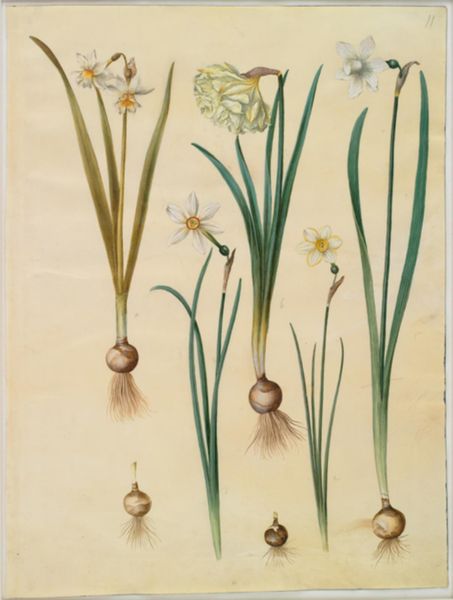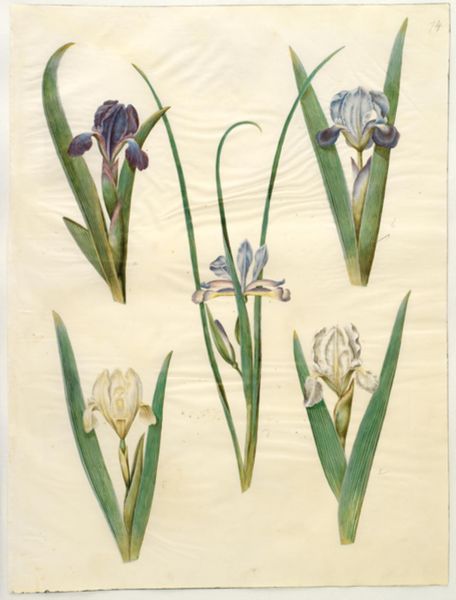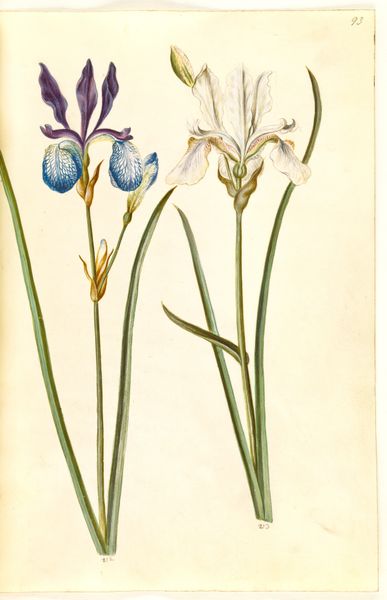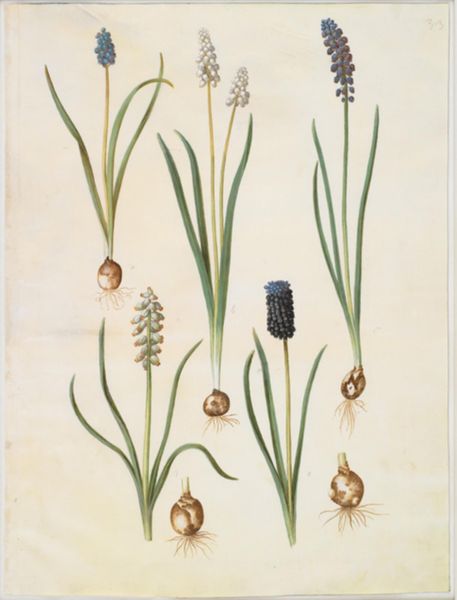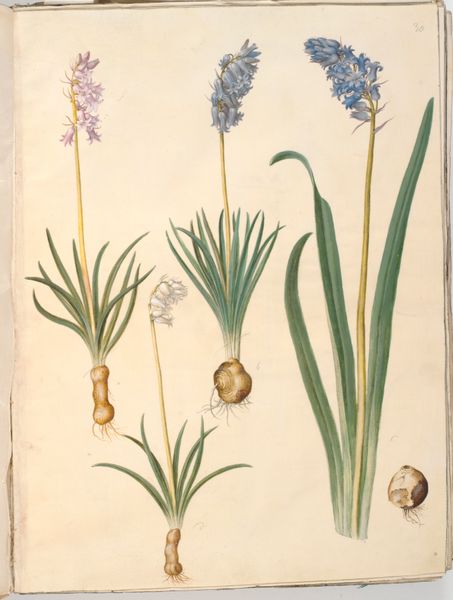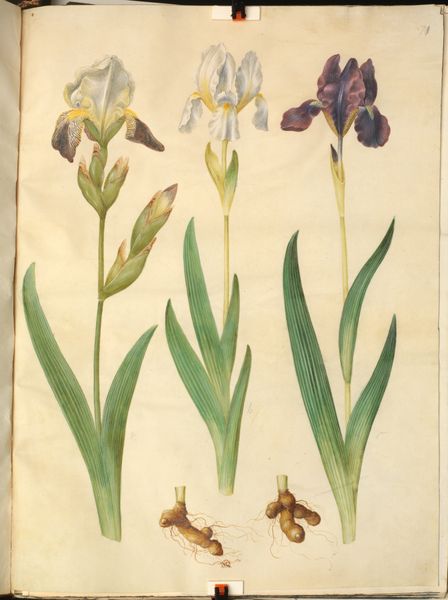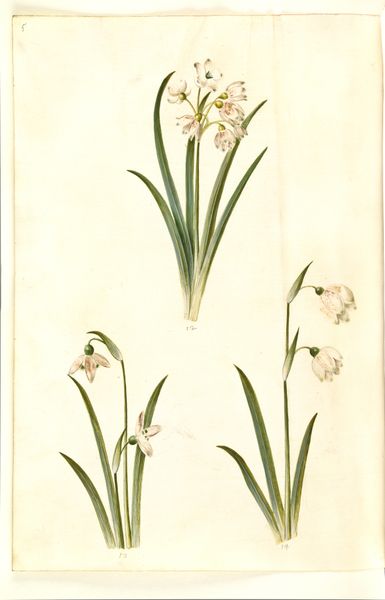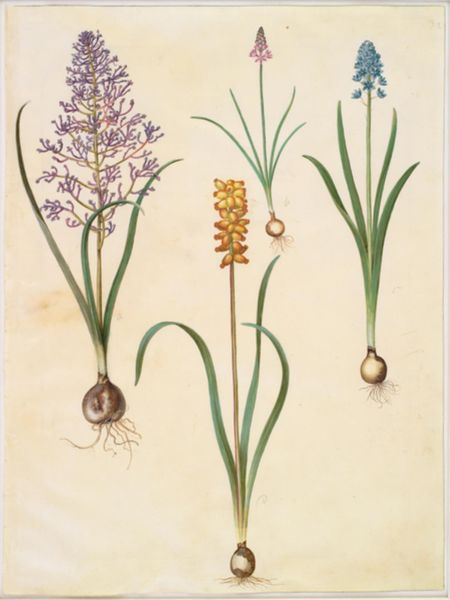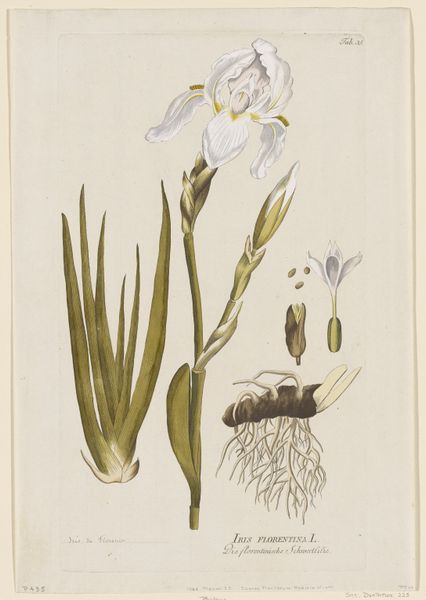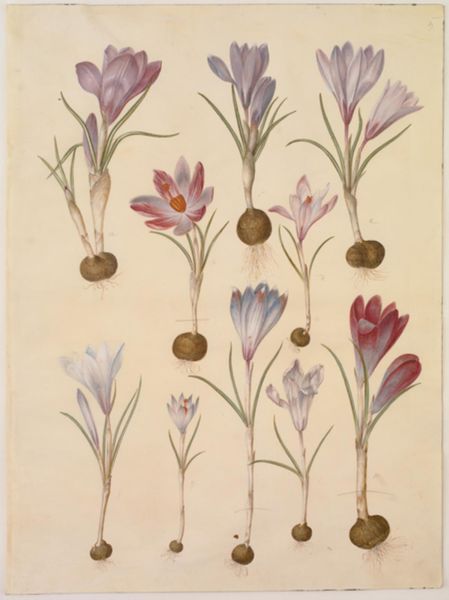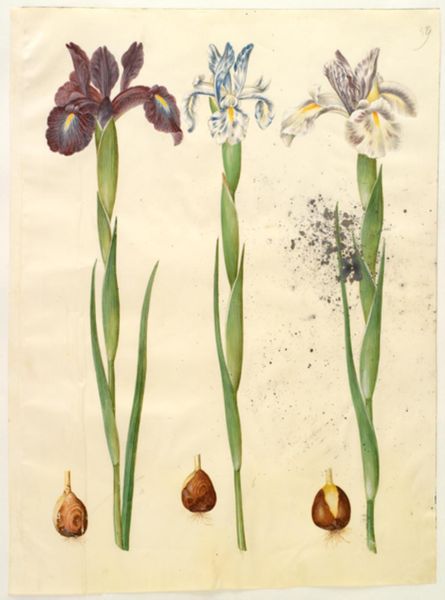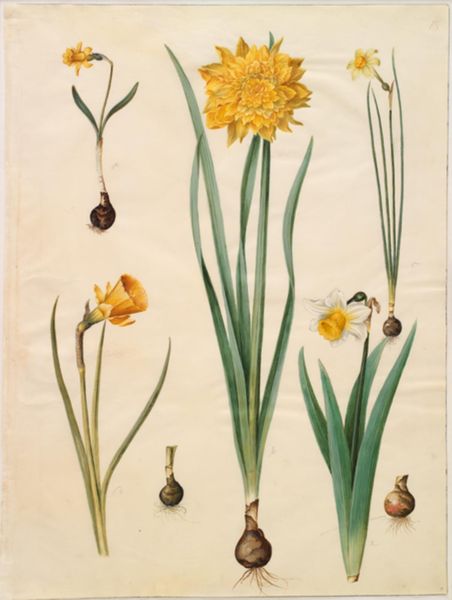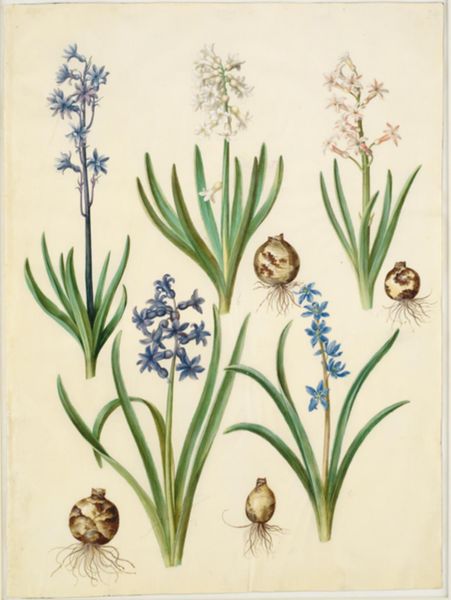
Galanthus nivalis (almindelig vintergæk); Leucojum vernum (dorotealilje); Leucojum aestivum (sommer-hvidblomme); Leucojum autumnale (høst-hvidblomme) 1649 - 1659
0:00
0:00
drawing, gouache, paper
#
drawing
#
gouache
#
paper
#
watercolour illustration
#
botanical art
Dimensions: 505 mm (height) x 385 mm (width) (bladmaal)
Editor: So, here we have Holtzbecker's "Galanthus nivalis…," a watercolour, gouache and ink drawing of snowdrop varieties, dating from the mid-17th century. It’s so delicate and precise. What strikes me most is the objective quality. What’s your read on it? Curator: Well, beyond its botanical accuracy, it's fascinating to consider its cultural context. These meticulous drawings weren't just about science. Think about the patrons: often wealthy landowners, commissioning such works. It becomes a demonstration of their power, their ability to cultivate and control even the natural world. In a way, these images served a similar purpose as estate portraits. Does that reframe the work at all for you? Editor: Absolutely. So, the "objectivity" is actually intertwined with the projection of power, not merely a scientific gaze. The act of collection and documentation becomes inherently political. Curator: Precisely. Consider too how the rising merchant class mirrored the aristocracy, vying to obtain the latest discovered species for both decorative display and intellectual authority. Botanical illustrations gained status beyond purely descriptive scientific records, as representations of status. How might an exhibition today capitalize on these layers of meaning, do you think? Editor: Maybe explore the tensions between art, science, and status, making the contemporary relevance more explicit. Comparing these with modern images too... That might speak to current debates surrounding ownership, climate change and genetic engineering in relationship to global capitalism? Curator: Indeed. Reflecting on how social and political structures influence the creation and appreciation of art—in both the past and present—enriches our experience and provides greater societal access for the public. Editor: Right, I understand this piece so much more! Thanks.
Comments
No comments
Be the first to comment and join the conversation on the ultimate creative platform.
